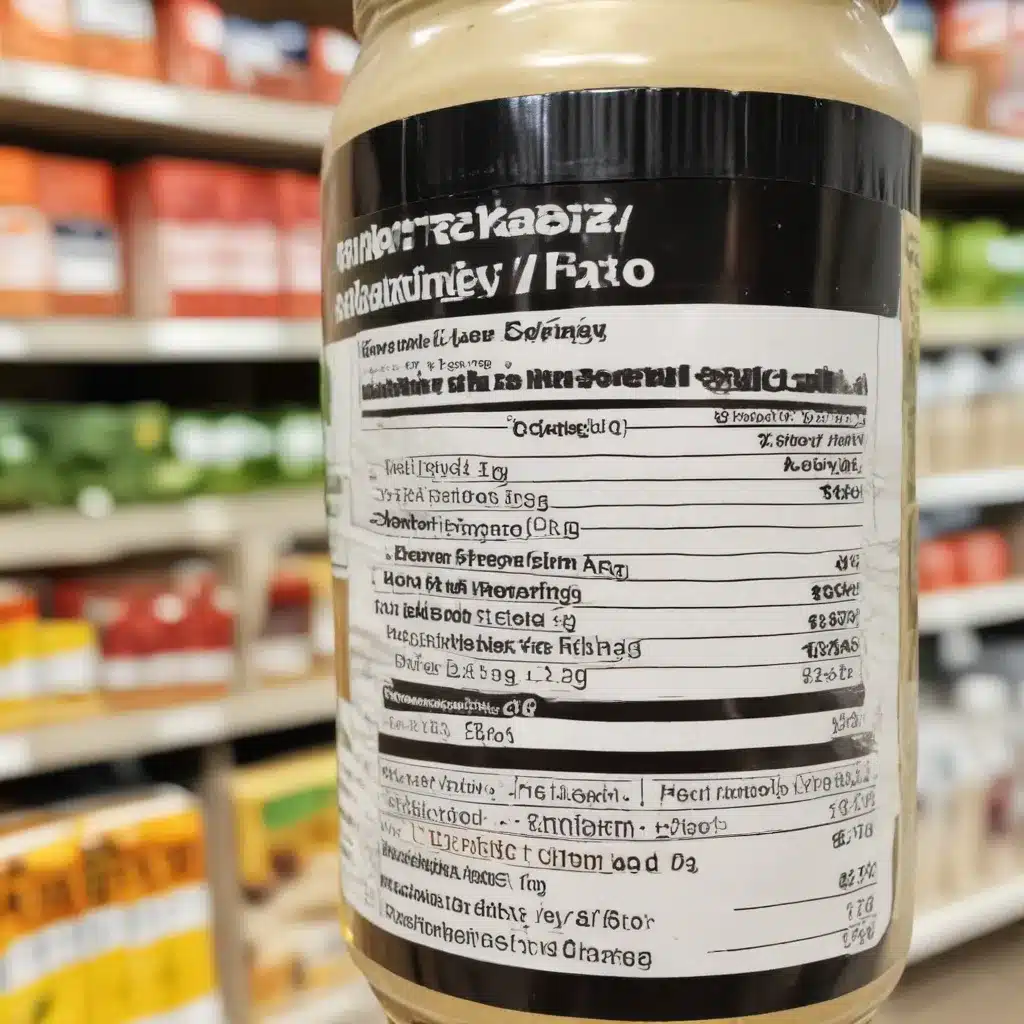
Understanding the Nutrition Facts Label
In today’s fast-paced world, where convenience and pre-packaged foods have become the norm, it’s more important than ever to be an informed consumer. The Nutrition Facts label, mandated by the U.S. Food and Drug Administration (FDA), is a valuable tool that can help you make informed decisions about the foods you and your family consume.
The Nutrition Facts label has undergone several revisions over the years, with the latest update in 2016 aimed at providing clearer and more relevant information to consumers. This comprehensive guide will help you navigate the ins and outs of the Nutrition Facts label, empowering you to make healthier choices for your household.
Decoding the Nutrition Facts Label
Let’s dive into the different sections of the Nutrition Facts label and explore how to interpret the information they provide.
Serving Size and Servings Per Container
The first thing you’ll notice on the label is the serving size and the number of servings per container. This is crucial information, as the rest of the label’s values, such as calories and nutrients, are based on the serving size. If you consume more or less than the stated serving size, the nutrient information may not accurately reflect your intake.
Calories and Calorie Sources
The Nutrition Facts label clearly displays the number of calories per serving. Calories are a measure of the energy provided by the food, which comes from carbohydrates, proteins, and fats. Understanding the calorie content can help you manage your overall caloric intake and maintain a healthy weight.
Nutrients
The Nutrition Facts label lists various nutrients, including:
– Total Fat: This includes all types of fat, such as saturated, trans, monounsaturated, and polyunsaturated. Aim to choose foods lower in saturated and trans fats, as these can contribute to heart disease.
– Sodium: Excessive sodium intake is linked to high blood pressure. The label will show the milligrams (mg) of sodium per serving, and the recommended daily limit is no more than 2,300 mg.
– Total Carbohydrates: This includes dietary fiber, sugars, and added sugars. Dietary fiber is important for digestive health, while added sugars should be limited to less than 10% of your total daily caloric intake.
– Protein: Protein is essential for growth, development, and maintaining lean muscle mass.
– Vitamins and Minerals: The label lists the percentage of the recommended daily intake (%DV) for key vitamins and minerals, such as vitamin D, calcium, iron, and potassium. Aim for foods that are higher in these essential nutrients.
Percent Daily Value (%DV)
The Percent Daily Value (%DV) is a helpful tool for understanding the relative amount of a nutrient in a serving of food. The %DV is based on a 2,000-calorie diet, so it may not be an exact match for your individual needs. However, it can still provide a general guideline for making informed choices:
– 5% DV or less of a nutrient is considered low
– 20% DV or more of a nutrient is considered high
By focusing on foods with higher %DVs for beneficial nutrients and lower %DVs for nutrients you want to limit, you can create a healthier overall diet.
Front-of-Package Claims and Health Labeling
In addition to the Nutrition Facts label, many food packages also feature front-of-package (FOP) claims and health-related labeling. These can include statements like “low in fat,” “high in fiber,” or “heart-healthy.” While these claims can provide valuable information, it’s important to remember that they may not tell the whole story.
FOP labels are regulated by the FDA, but they are often designed to highlight the positive aspects of a product while potentially downplaying less desirable nutritional information. Always be sure to check the Nutrition Facts label for a complete understanding of a food’s nutritional profile.
Similarly, health claims on food packages must be approved by the FDA and supported by scientific evidence. These claims can help identify foods that may offer specific health benefits, such as reducing the risk of heart disease or supporting bone health. However, it’s crucial to consider the food as a whole, not just the specific nutrient or health claim.
Navigating Ingredient Lists
The ingredient list on a food package provides valuable information about the contents of the product. Ingredients are listed in order of predominance by weight, with the most abundant ingredients listed first.
Pay attention to the types of ingredients used, particularly when it comes to added sugars, which can come in many forms, such as high fructose corn syrup, honey, or agave nectar. Additionally, be aware of common food allergens, such as milk, eggs, wheat, and peanuts, which are required to be clearly labeled.
Expiration Dates and Food Freshness
Food packages also feature dates that provide information about the product’s shelf life and optimal quality. These can include:
– “Best if Used By” or “Best Before” dates: These indicate the date by which the product should be consumed for best quality and flavor.
– “Use By” dates: These are the last date recommended for use of the product while at peak quality.
– “Sell By” dates: These tell the store how long to display the product for sale.
While these dates don’t necessarily mean the food is unsafe to eat after the date has passed, they can provide guidance on when the food is likely to be at its freshest and most flavorful.
Putting it All Together
Navigating the Nutrition Facts label and decoding the information on food packages can seem overwhelming at first, but with practice, it becomes a valuable skill for making informed, healthier choices for you and your family.
Remember, the Stanley Park High School website is a great resource for additional guidance on nutrition and healthy living. By understanding the Nutrition Facts label and being an informed consumer, you can take control of your family’s diet and set them up for a lifetime of good health.

